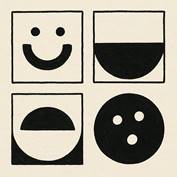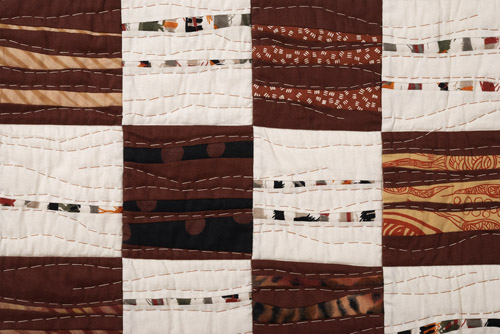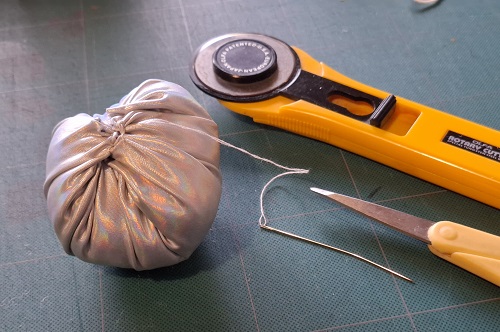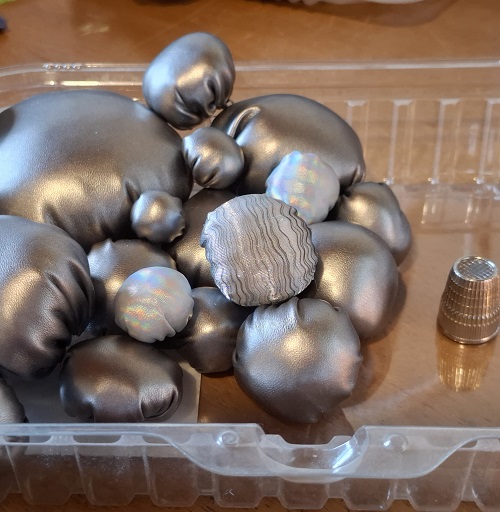A call for entries has been announced for the SAQA Oceania Region (closing date January 31, 2026) It has a theme “Opposites” which I’m sure I can accomodate in some way while producing a small work (70cm x 50cm) that fits into my quilted fibreart portfolio.
A few weeks ago I began a list of ideas I could consider, but at the time nothing grabbed my enthusiasm, so I consulted chatgpt.com to see what AI could suggest. I’ve written before about my earliest ‘chat’ with AI If you still haven’t explored this new technology, what is really interesting is that once you start making comments and evaluating what the algorithm suggests, it’s easy to forget that this is just an algorithm you’re interacting with, not an actual person. I found myself using carefully polite language, just as I would if I were discussing an issue with a real person, because, well you just never know…
‘We’ went back and forth about various concepts – shapes, textures, lines, colours and more, and thinking about shapes, I then asked it to suggest some ideas based on this diptych of mine: “Sweat of The Sun; Tears of The Moon” 125x60cm. 2018.

These next pics are what ChatGPT put in front of me:



I was intrigued by these and loved each of them; but then I read the prospectus again, and found the wording of the section dealing with copyright, originality, kits, etc., isn’t entirely clear. “Quilts made from patterns, kits, or completed in workshops with the collaboration or design of an instructor, or copies or clearly derivative work based on source material not made by the artist (including but not limited to artwork, photos, and AI-generated images) are not eligible.” I then felt a bit uneasy about saying I’d used AI as a design tool, because although the algorithm was basing its suggestions on my own original work, this usage could be or possibly even should be, interpreted as a collaboration between myself and the algorithm.
So, to avoid this grey area, I opted to explore totally different design ideas, and pulled together a collection of my own actual samples and details from other original works, including but not limited to these ones –




I’m focused on embellishing stuffed puffs just now, but will want to get this done soon, so that I have the photography ready to sbmit with my entry in January – the month that my solo exhibition will be showing in here in Uruguay.









